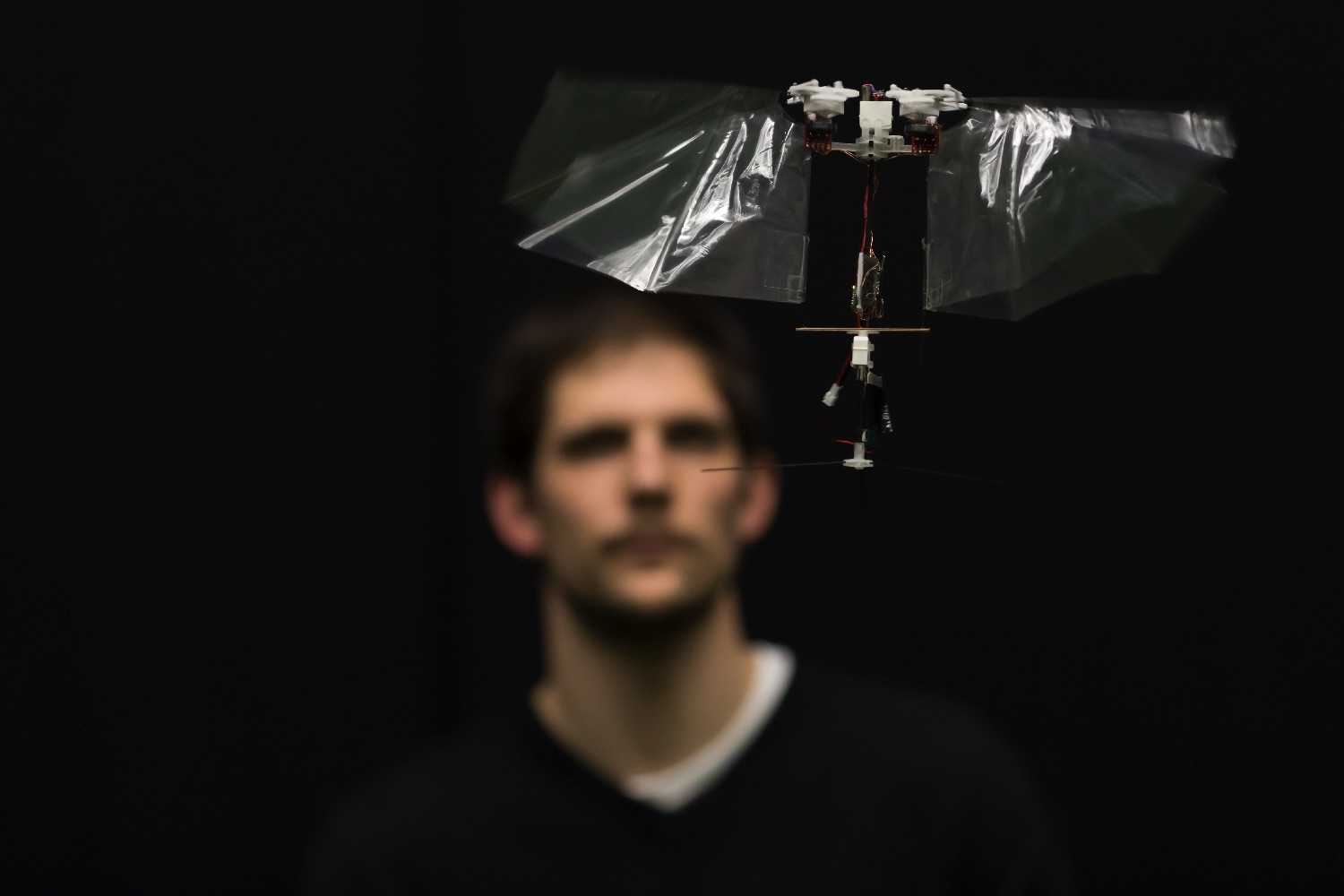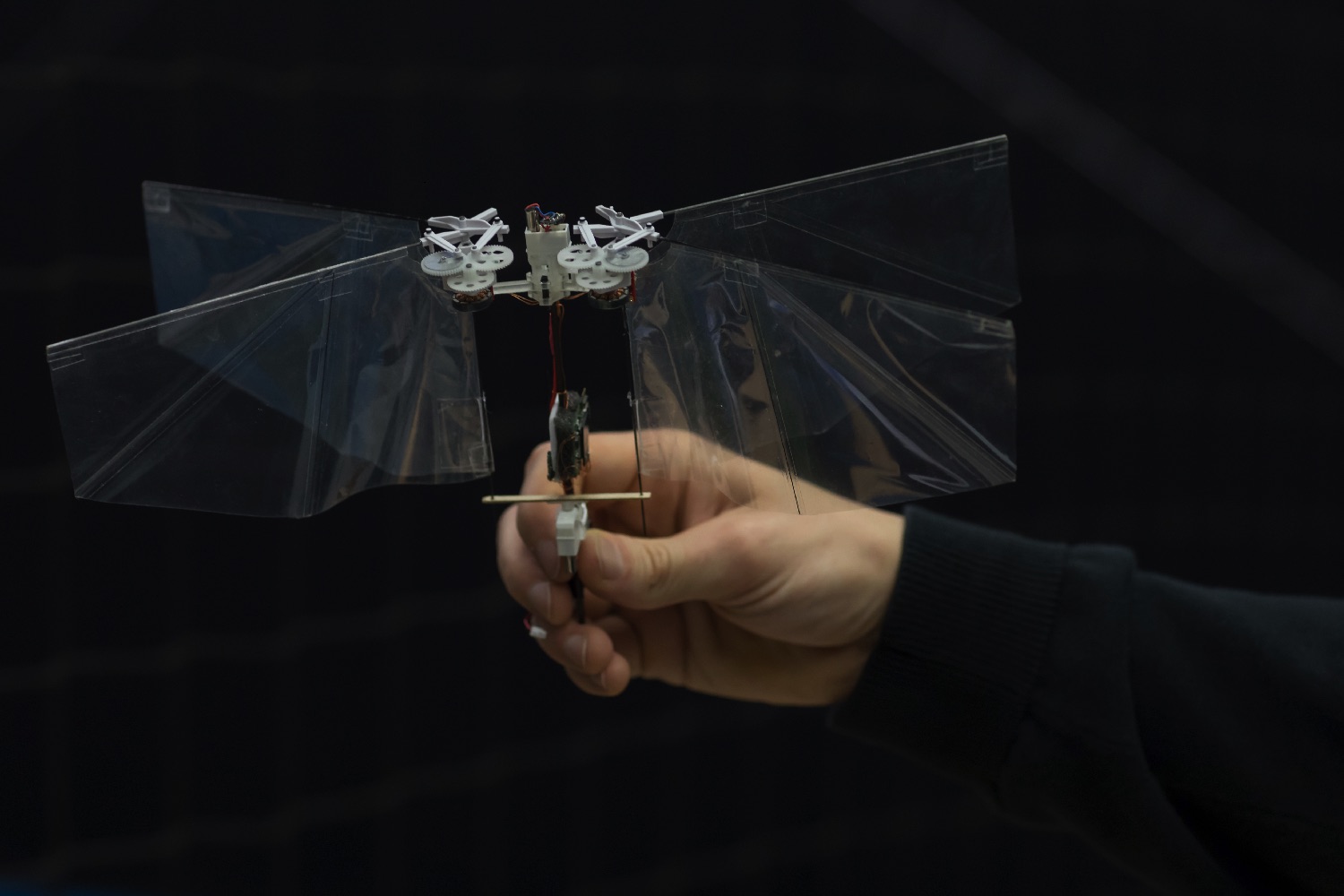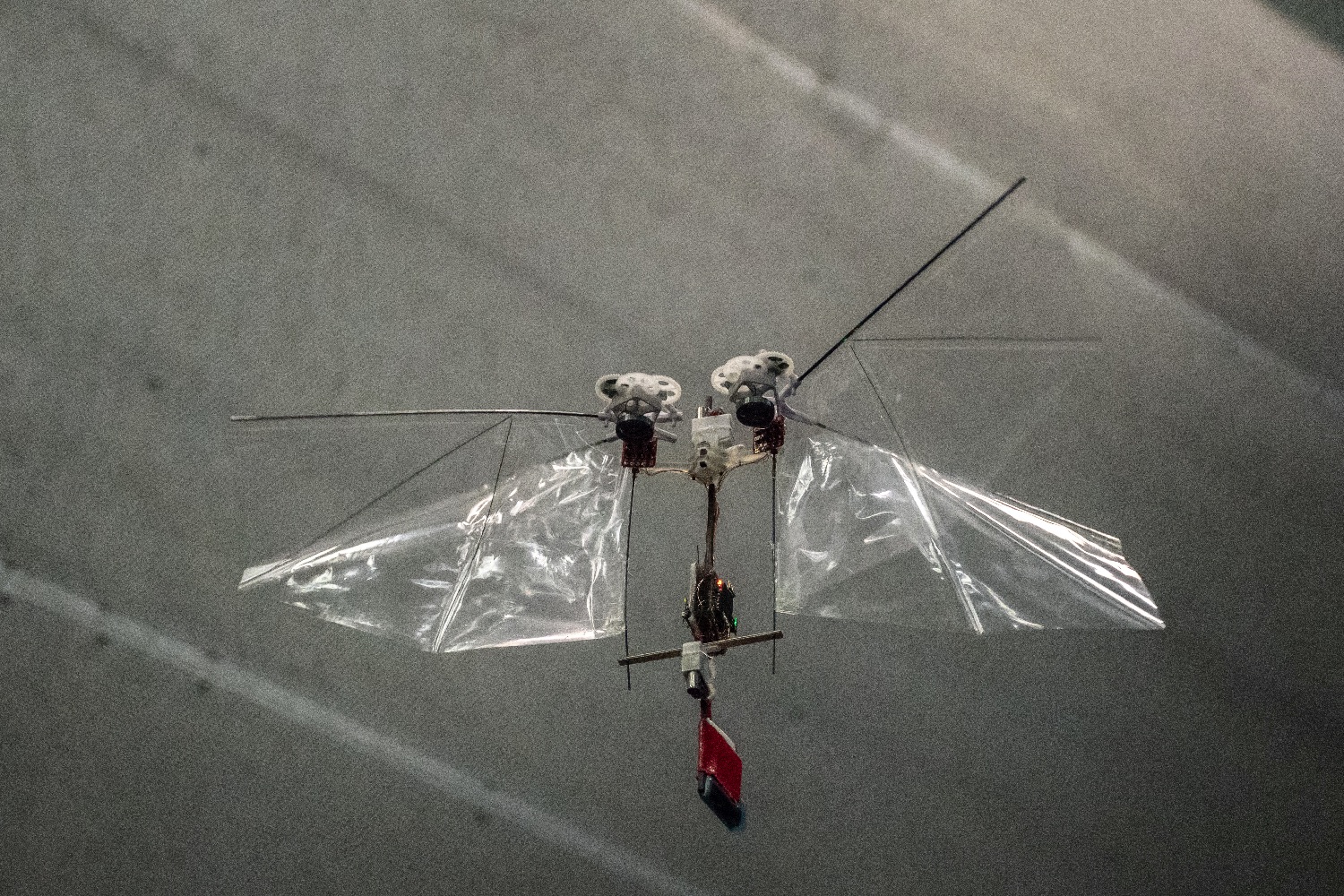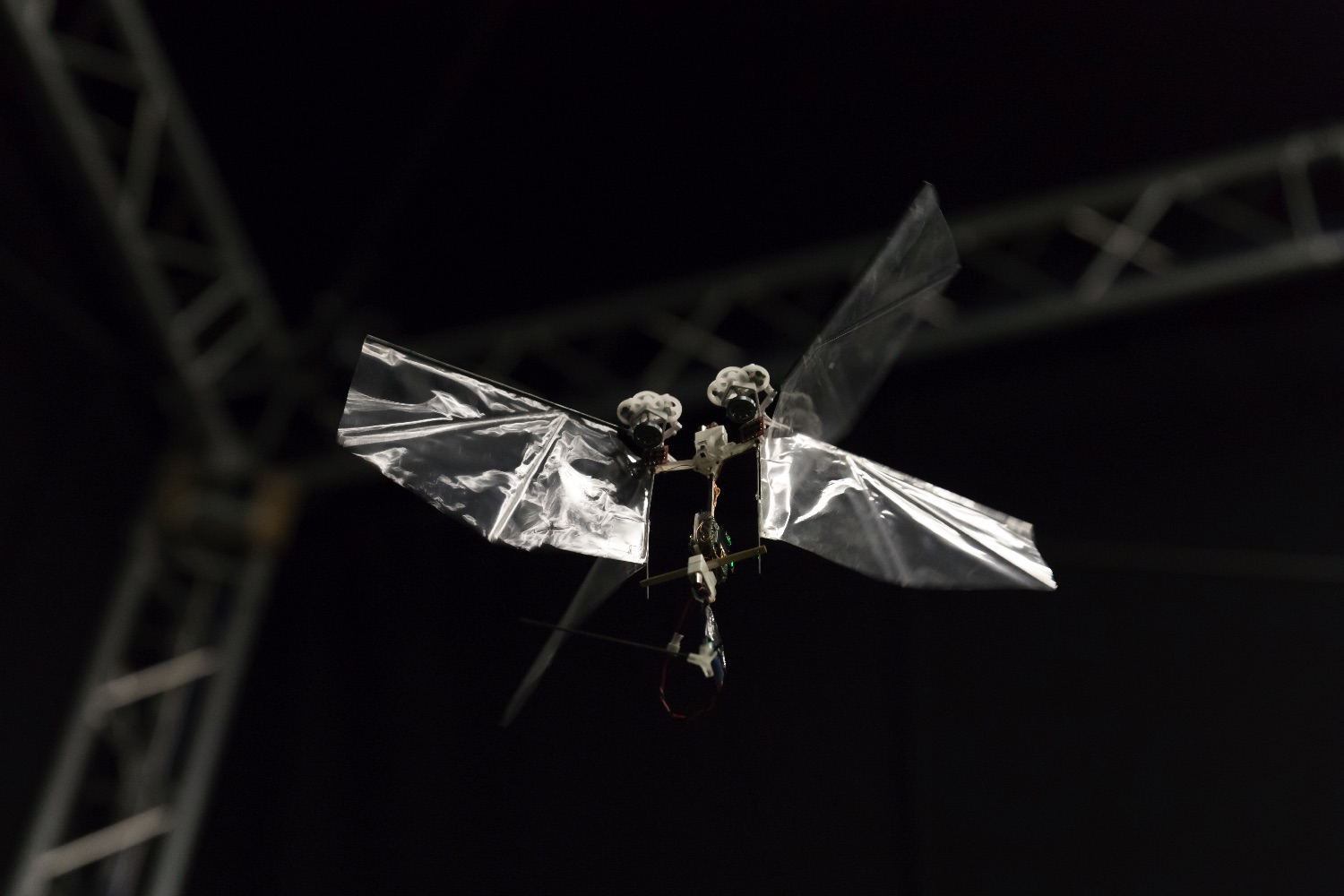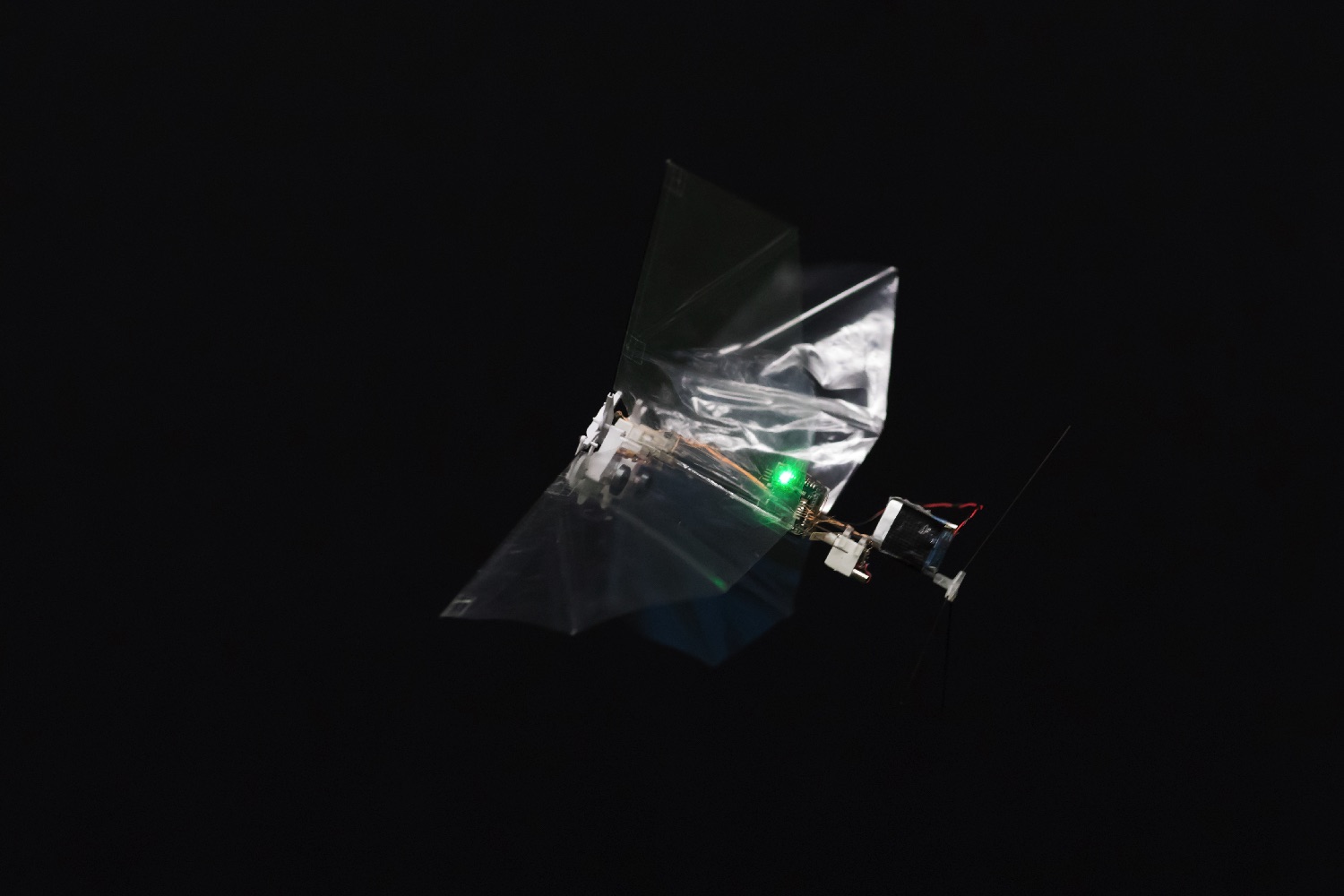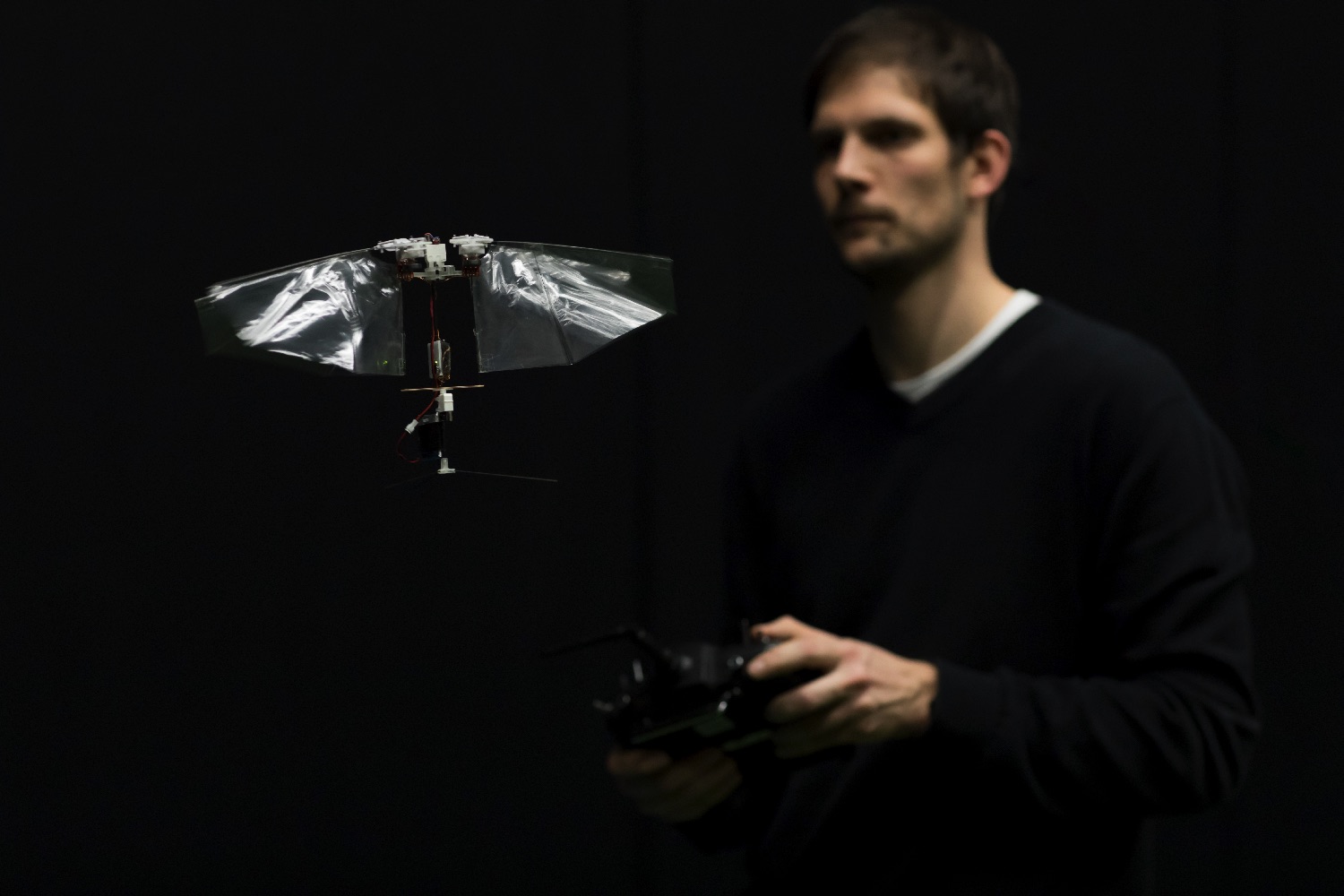Humans may have to worry about robots taking their jobs, but you know who else should probably be watching their back? Fruit flies! At least, that’s if you’re going by a new robotic creation from researchers at Delft University of Technology in the Netherlands. They have built an awesomely agile, quad-wing flapping robot, which can exhibit the same kind of winged motion as its insect inspiration. It’s the latest robot in a series of so-called DelFly robots created by the researchers — but with one very important twist.
“Our previous DelFly robots had an airplane-like tail, which made it stable, and was used for steering,” Matěj Karásek, who led the work, told Digital Trends. “Fruit flies, but also other insects, have no such tail. Instead, they control their flight by adjustments of the motion patterns of [their] flapping wings. The DelFly Nimble does the same: It uses its flapping wings not only to produce lift force that keeps it flying, but also for control. The loss of tail makes it much more agile, like flying insects.”
DelFly’s four wings let it control three axes of flight. With them, it’s able to exhibit some dazzlingly fly-like moves — and even a full 360-degree flip. At present, it’s able to fly for only around five minutes, however. That limits its usefulness, but with the proper amendments, this could well change in the future.
“Currently, the robot can already carry a small camera, sending live images to the operator, and can fly for more than a kilometer when fully charged,” Karásek continued. “We are already working on making the drone fully autonomous by adding a camera system as in our previous DelFly Explorer.”
Guido de Croon, another researcher on the project, said that the flapping wing propulsion the team has developed will make it possible to more easily miniaturize versatile flying robots in the future. De Croon imagines “swarms of these tiny, fully autonomous robots pollinating plants in greenhouses, or searching for survivors in collapsed buildings after earthquakes.”
That’s out of reach for now, but — even taken purely as a technical demonstration of the power of biomimicry — the latest DelFly is pretty impressive in its own right.
A paper describing the work was recently published in the journal Science.
